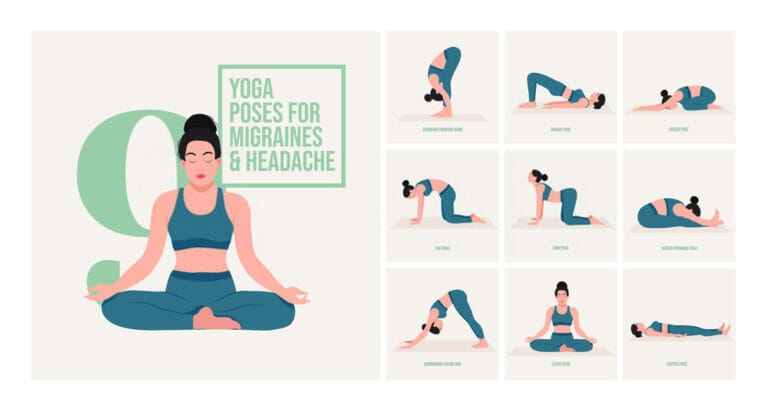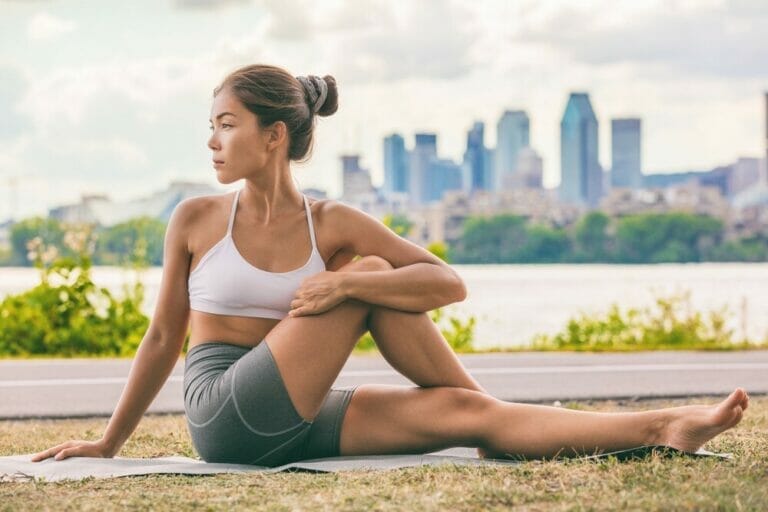How To Do Simple And Effective Pelvic Floor Yoga Poses
Many of us have no idea how the pelvic floor works. Well! That’s a little embarrassing because our pelvic floors do a lot to our bodies daily.
Therefore, we should return the favour every once in a while. However, unlike workouts that you know would strengthen your arms or tone your legs, working out your pelvic floor isn't always as simple.
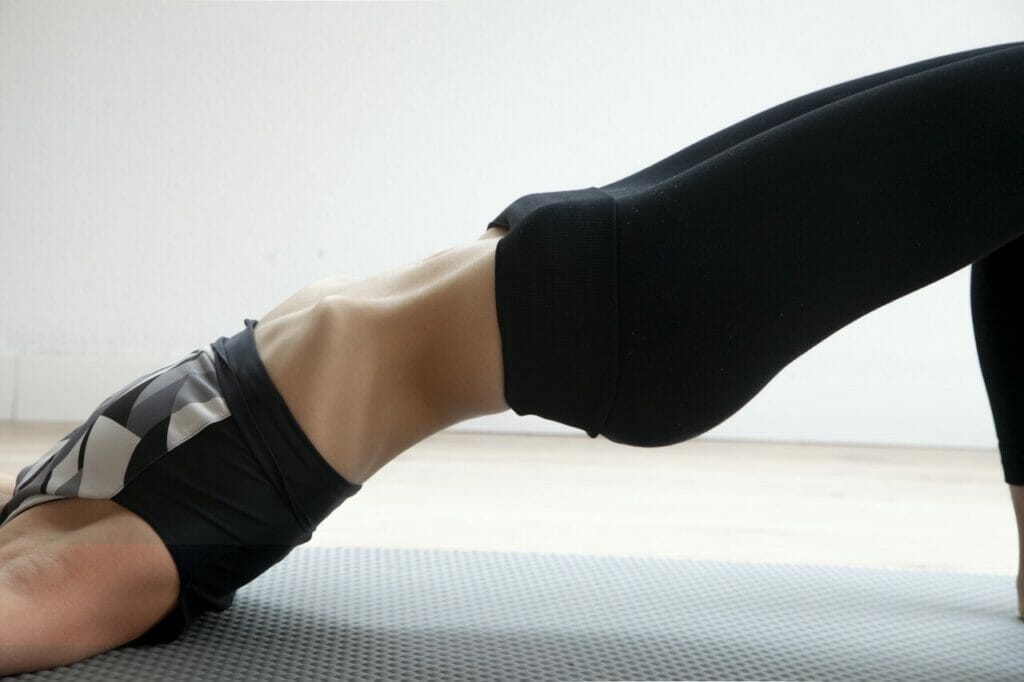
While there are many exercises you can do to strengthen your pelvic floor, one of the best things is yoga. Yoga poses focus on strengthening the pelvic muscles and pelvic floor.
In this article, I’ll be discussing a few of the best yoga poses you can do to work out your pelvic floor.
Warrior II (Virabhadrasana II)
This pose is fantastic for the pelvic floor, as well as your obliques, thighs, and shoulders.
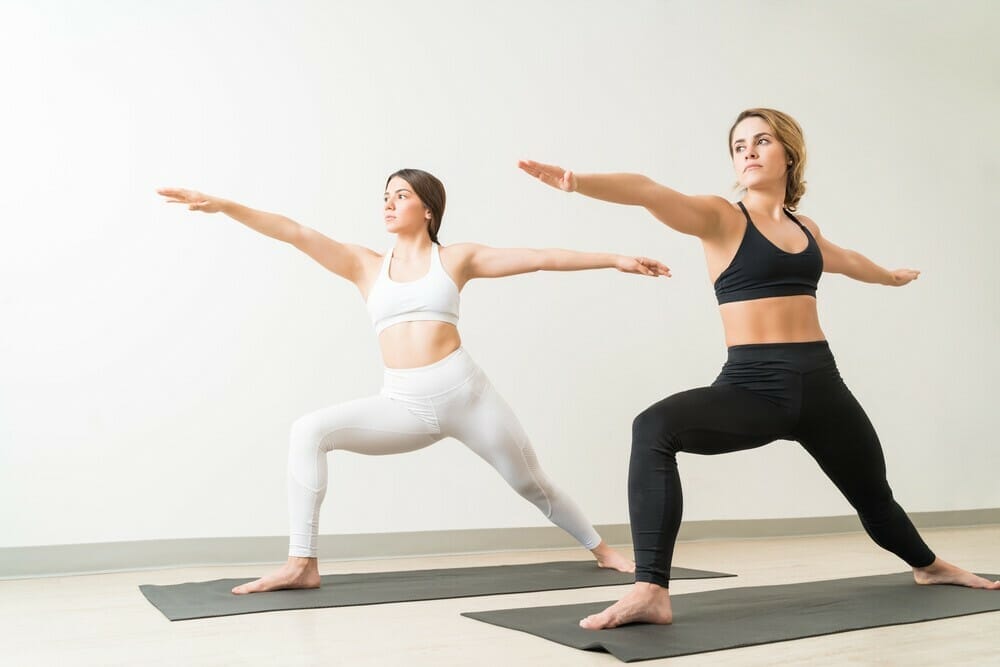
Step your left foot back about three feet and bend your right leg while standing at the top of your mat. Extend your arms over your legs and stare past the tips of your front fingers.
Check that your front knee is tracking over your front foot to engage your glutes for more incredible pelvic floor support.
Child’s Pose (Balasana)
Child’s pose is a lovely exercise that helps to expand and stretch the pelvic floor muscles. It’s a good idea to practice it in between sets of Cat-Cow.

Start in Tabletop Pose. Keep your feet together and open your knees to a broader position than hip-width apart.
Drop your pelvis back into your feet, extend your arms forward, and relax your shoulders down toward the mat. You can support your trunk with a cushion (or two!) to make your Child’s Pose less deep.
Hold this posture for 60-90 seconds, ensuring you are entirely comfortable, breathing in long, deep breaths to encourage stretching and opening your pelvic floor.
Knees to Chest (Apanasana)
Draw your knees into your chest, exhale while holding onto your shins, and engage your abdomen. Place your feet on the floor and stretch your arms above as you inhale.
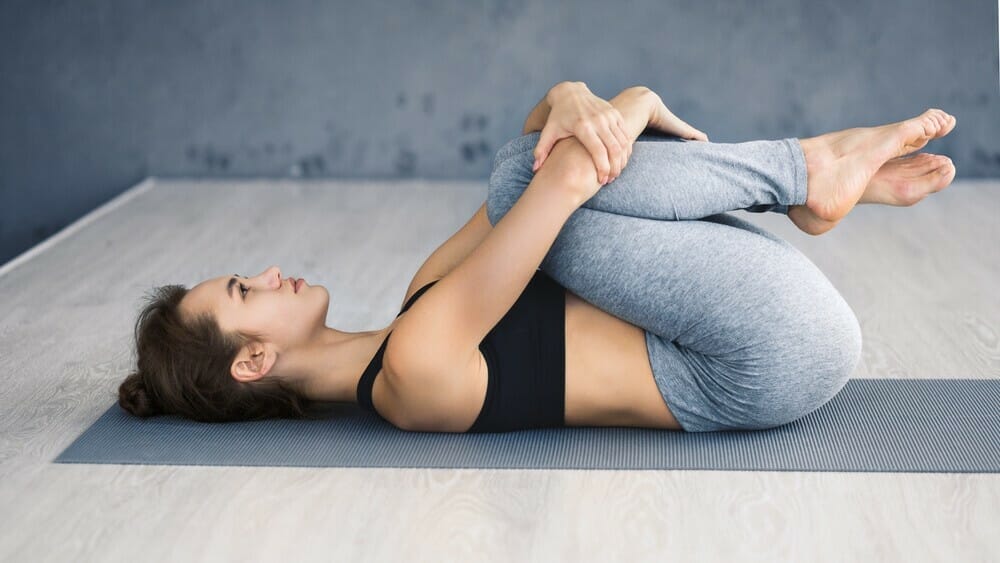
You should feel some stretching in your stomach, sides, and back. Curl up again on the exhale and continue this pattern, this time following your breath.
This position is excellent for treating lower back pain, linked to pelvic floor dysfunction in numerous studies.
Wide-Legged Forward Fold (Prasarita Padottanasana I)
Place your feet wide on the mat and drop your upper body gently, maintaining your back long and safe.
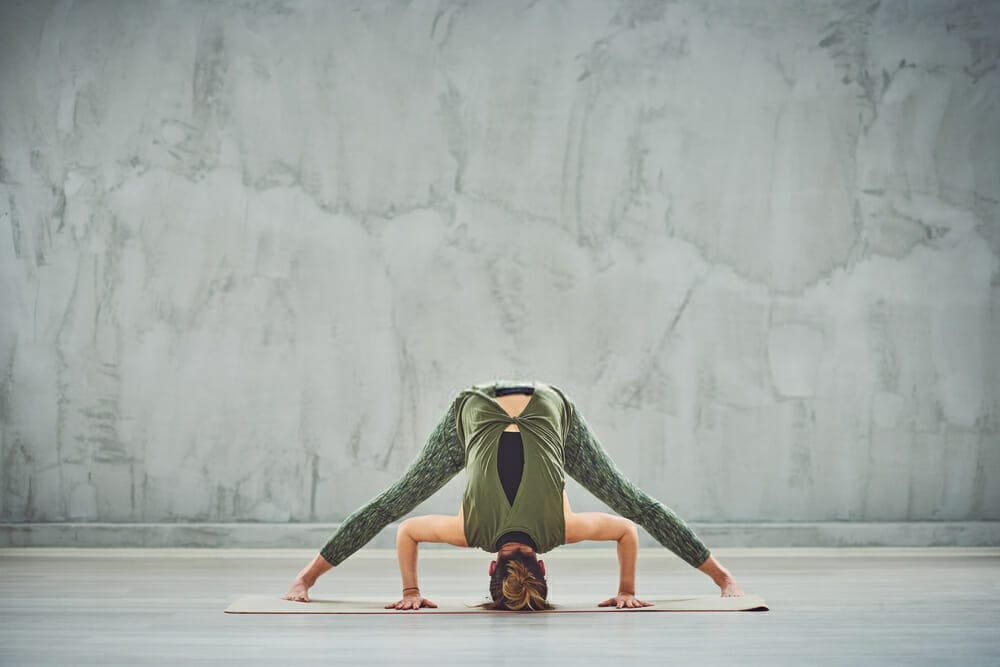
A Wide-Legged Forward Fold opens up your hamstrings and groin, relieving pelvic floor stress, but it’s crucial to go at your rate to avoid injury.
If the fold seems too severe, bend your knees or use props (blocks, bolsters, blankets, or a cushion) under your head for more support.
Take your time finding your breath and using tiny Cat-Cow motions to bring your focus to your pelvic muscles.
Wide-Legged Squat (Malasana)
Squat down with your feet mat-distance apart. Press your elbows into your knees, raise your chest, and press your tailbone into your knees.
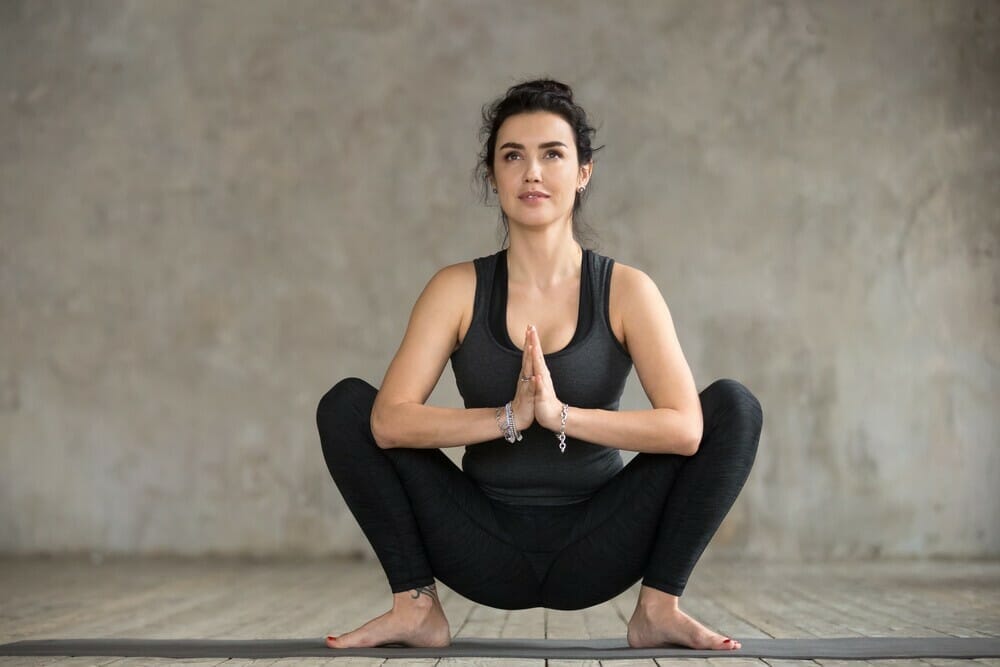
Placing your hands in prayer on your sternum will assist you in connecting to the rise and fall of your inhales and exhales. Aim for a long back here so you can truly open up your pelvic floor.
Wide-Legged Squats are more complex than Wide-Legged Forward Folds in terms of inner thigh and pelvis opening. However, if it’s too painful (never attempt to push through pain! ), you may always put a prop under your seat.
Mountain Pose
The Mountain Pose will help to improve your posture in general. In addition, it helps to strengthen your core muscles.

Set your feet hip-width apart. Spread your toes apart without grasping the ground. Slightly bend your knees.
Lift your knee caps slightly by activating the front of your thighs. Stand tall by extending your spine. Draw your shoulder blades back and down gently.
Continue to hold this posture while breathing normally.
Utkatasana (Chair Pose)
Utkatasana is an excellent example of a position that engages all areas of the pelvic floor rather than just constricting it, as in Kegel exercises.
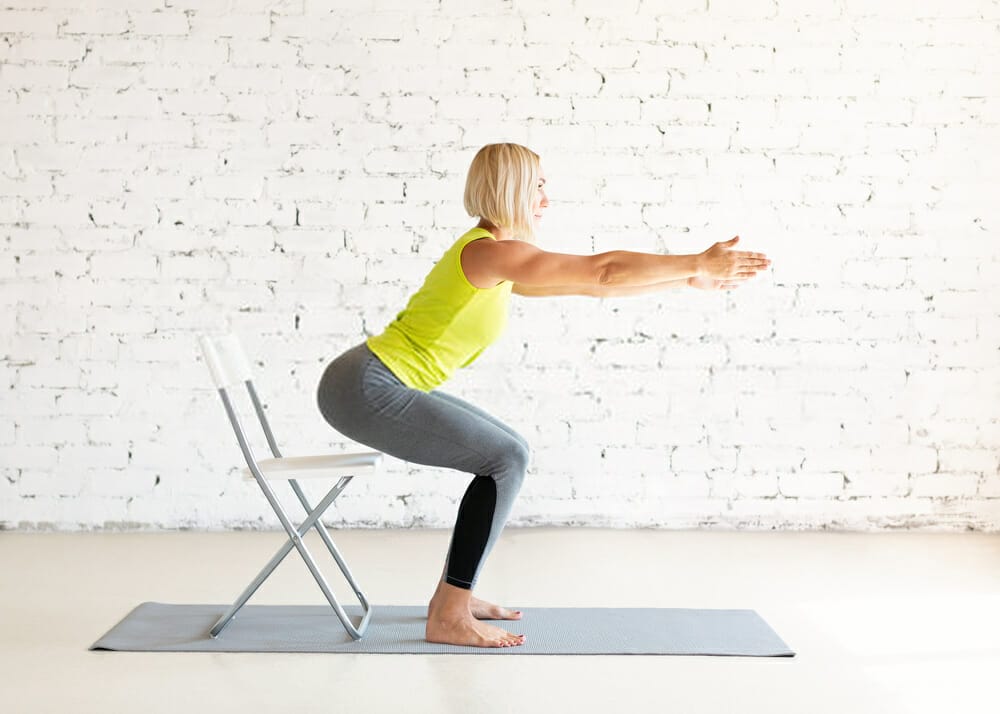
Begin by sitting your hips back with your feet hip-width apart or together. A block placed between your thighs might also help with this position.
Holding the block stable demonstrates that the thighs are engaged, and the pelvic floor is being lifted. These muscles stretch when you lower yourself and raise as you return to a standing position.
Marjaryasana/Bitilasana (Cat and Cow)
Another posture sequence that is frequently considered solely for its spinal advantages is the cat and cow pose sequence, which is commonly performed combined as a spinal warm-up at the start of practice.
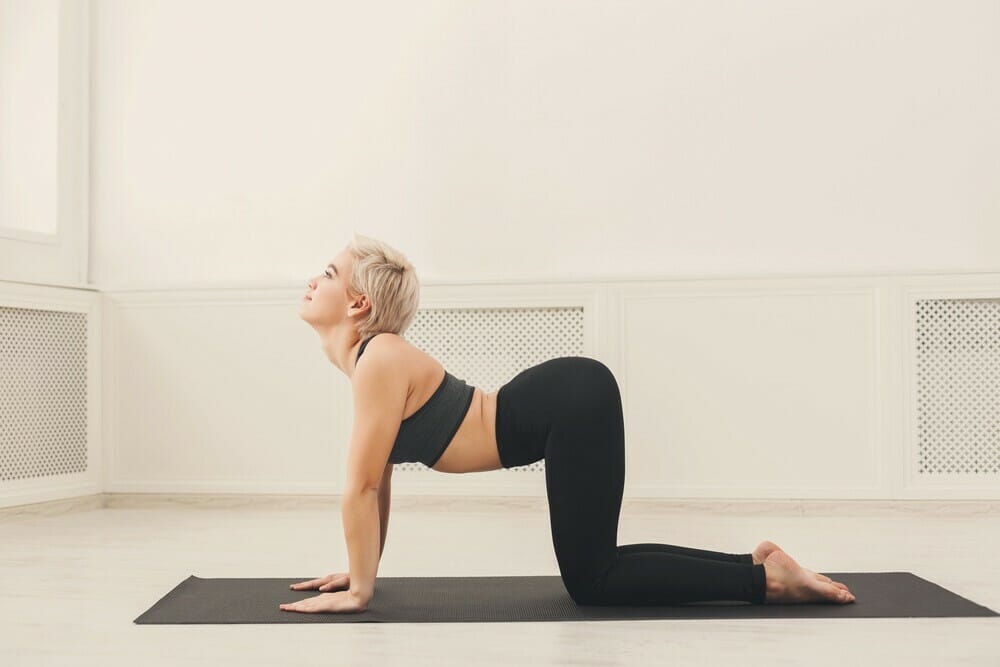
Cat and cow pose offer consistent spine movement, which promotes spinal health and tones the pelvic floor.
During the exercise, you must deliberately bring your belly towards your spine to maintain lengthen as you curl and circle your spine.
This activation of the Uddiyana Bandha corresponds to the activation of the Mula Bandha. Though more passive than other positions, this involvement tones the pelvic floor gently.
Urdhva Dhanurasana or Chakrasana (Wheel Pose)
While it’s easy to focus just on the back when practising backbends, much is going on in the lower body when pressing up into wheel position.
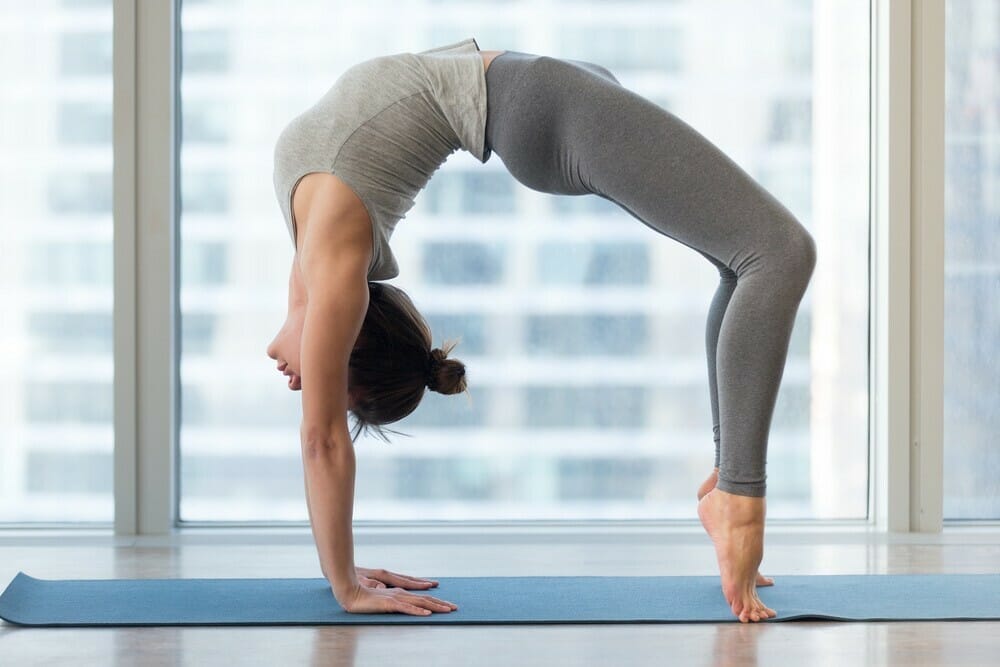
You are activating your pelvic floor muscles as you push through your heels and elevate your hips.
Holding a yoga block between your thighs while you lift your hips is an excellent method to ensure you're working your lower body appropriately.
Holding this block in place can assist you in keeping your legs and pelvis active throughout the posture.
Safety tips for all yoga poses
- A word of caution for all yoga poses, including those on this list explicitly addressing pelvic floor muscles: some guidance is needed from a yoga teacher if you’re new to the practice of yoga.
- Pregnant women and those recovering from surgery to repair an injury or illness should not undertake these poses.
- Modifications are possible to any pose if you aren’t comfortable. Don’t push yourself beyond your capacity.
- Also, always remember that breathing is vital when practising yoga poses!
Bottom Line
Yoga is an excellent way to improve pelvic floor health. However, it’s important not to push too hard or too fast, especially when working on specific poses that target muscles in the pelvic region.
For your best results, make sure you eat a diet balanced of fresh fruits and vegetables. A daily dose of Vitamin C can also help!
If you are concerned about your pelvic organs prolapse or other pelvic floor problems like urinary incontinence, try doing a weekly yoga practise to stretch and tone your muscles.
Even a twenty-minute exercise may assist you in improving body awareness to engage your pelvic floor muscles better and maintain your pelvic floor strength.




